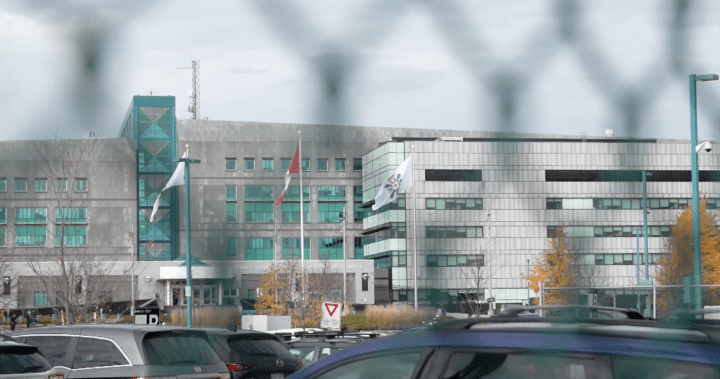Whoever takes over the top job at CSIS this fall will face deep fissures inside Canada’s intelligence agency that are hampering efforts to probe and disrupt Chinese foreign interference.
Little-noticed items in two recent reports by federal national security oversight agencies pointed to the overriding problem and challenge: intelligence officers in a regional office are bickering with other CSIS staffers at Ottawa headquarters who are also tasked with investigating meddling by the People’s Republic of China (PRC).
The “disconnect” between headquarters and an unspecified regional office has been brewing since 2019, according to reports by the National Security and Intelligence Review Agency (NSIRA) and National Security and Intelligence Committee of Parliamentarians (NSICOP).
David Vigneault’s unexpected retirement as CSIS director after seven years came just weeks after these tensions were laid bare in the reports.
These tentions, however, were overshadowed by another part of the NSICOP report.
NSICOP caused a storm after its members reported seeing “troubling intelligence” that some Parliamentarians were “semi-witting or witting” participants in foreign states’ efforts to interfere in Canadian politics.
Yet the two reports also examined how CSIS more broadly manages foreign political interference investigations and how its findings flow to top government decision-makers – or don’t.
It was in this context that frictions between regional intelligence officers and CSIS headquarters staff, and between CSIS and the prime minister’s own national security advisers, were revealed.
The reports found officers inside one CSIS regional office would investigate and collect information about alleged PRC interference and share it with a secret special unit at CSIS headquarters that is “dedicated” to investigating Chinese foreign interference.
There, in theory, members of the special CSIS HQ unit would analyze it and share it across government agencies. Instead, the intelligence often did not get to the people who needed to know. Sometimes, it never even left the service’s own offices.
“Decisions regarding whether, when, and how to disseminate this intelligence were the subject of disagreement, uncertainty, and lack of communication within CSIS,” NSIRA’s report revealed.
This disconnect was largely between CSIS officers collecting intelligence in the region, and those responsible for disseminating that intelligence at National Headquarters, which includes both the dedicated PRC interference unit with operational and analytical capabilities and the CSIS executive.
“Put simply, intelligence officers did not understand why some of the intelligence they collected was either not disseminated at all or disseminated following what they perceived to be atypical delays,” NSIRA added, citing multiple examples from 2019 and the 2021 election. (NSIRA’s chair and vice chair declined a Global News request for an interview to discuss sections of their report describing the internal rift.)
Working in a world without clarity, CSIS intelligence officers became increasingly frustrated when it came to sharing intelligence about foreign Chinese political interference, NSIRA noted.
One CSIS analyst wrote emails to spy agency headquarters demanding to know why unidentified reports he had prepared on PRC foreign interference were not being disseminated.
“As one email opined, “If we are not going to inform and share what we know, why are we collecting it,” the NSIRA reported.
There were multiple examples of information on interference by the People’s Republic of China that was reported and written up by intelligence staff whose dissemination was delayed, downplayed or buried.
Bosses in Ottawa denied to NSIRA investigators that they applied different standards to the collection and dissemination of intelligence revealing political foreign interference by China. CSIS and the government just had other, shifting priorities, unidentified CSIS bosses told NSIRA.
A second factor came into play.
When CSIS intelligence did finally agree on and deliver intelligence to top decision makers at Global Affairs Canada or to the prime minister’s national security and intelligence advisor, those bureaucrats would minimize or downplay important intelligence that exposed foreign interference.
That trickled down within CSIS itself.
The cracks were perhaps best exemplified by events that began in 2021, NSIRA and NSICOP reported.
The email you need for the day’s
top news stories from Canada and around the world.

Get daily National news
Get the day’s top news, political, economic, and current affairs headlines, delivered to your inbox once a day.
In June 2021, an unidentified senior CSIS analyst completed a final draft of an exhaustive report on PRC-spying and interference in Canada and shared it with “a small number” of senior intelligence officials. It provided a detailed analysis of People’s Republic of China “foreign interference activities against Canadian political actors.”
CSIS characterized it as “the most complete and detailed analysis of PRC foreign interference directed against political actors produced to date.”
The analyst’s report combined a mix of intelligence, including CSIS human source collection and “SIGINT” (signals intelligence) from CSE, and possibly material from other NATO Five Eye allies.
SIGINT involves information gleaned from electronic communications, like intercepted mobile phone calls, text messages, computer and internet communications, and satellite signals.
The effort was neither published nor disseminated – until media leaks about Chinese government foreign interference to Global News and The Globe and Mail rocked the Liberal government.
NSIRI explained what happened next: “In October 2022, the author of the report reached out to CSIS management to push for the product’s publication (still only in top secret government circles), given the significant interest in foreign interference generated by the media leaks.”
The senior analyst developed a plan with superiors to publish the report on SLINGSHOT, a super-secret CSE intelligence information archive.
Uploaded on Feb. 13, 2023, 40 people read it on SLINGSHOT before it was suddenly made “inaccessible” on Feb. 22, NSIRI said.
CSIS Director Vigneault said he yanked it, later telling the oversight agencies he did so at the request of Prime Minister Justin Trudeau’s national security and intelligence advisor (NSIA), who at the time was Jody Thomas.
Two days later, on Feb. 24, 2023, a meeting took place at the Privy Council Office (the Ottawa bureaucratic department that serves the prime minister) to discuss the CSIS analyst’s report.
Attendees included the unnamed senior CSIS analyst and Ottawa’s six most powerful bureaucrats: the CSIS Director, the Chief of CSE, the Clerk of the Privy Council, the Deputy Minister of Public Safety, the Deputy Minister of Global Affairs Canada, and national security advisor Thomas.
Thomas asked the analyst for a “sanitized” version of the report for Trudeau, NSIRA stated.
The CSIS analyst was told: remove names, shorten the report and cut its distribution list, to limit circulation. The analyst complied, and a new version was completed on March 9, but it was still never shared with Trudeau, NSIRA and NSICOP stated.
NSIRI suggested that cases like this and others caused a lack of trust to emerge between rank-and-file CSIS intelligence officers, their bosses and political appointees.
Several mid-career intelligence officers and senior CSIS managers have quit amid sagging morale, the two intelligence-world sources said. Some CSIS workers even stopped putting Chinese foreign interference intelligence in writing, NSIRA observed without explaining why.
A former CSIS analyst, speaking on condition they were not identified, said they had never experienced anything like what NSIRI described above during decades of intelligence work.
The NSIRI and NSICOP reports noted Liberal government national security advisors often asserted that what vexed CSIS regional investigators – and what they described in intelligence reports – was “standard diplomatic activity” and dismissed it as any kind of threat.
The all-party NSICOP Parliamentarians rejected the idea that anything standard was going on.
NSICOP members actually examined a “significant body of intelligence” pointing to the PRC’s but also India’s “targeting of Canadian democratic processes and institutions.”
“In almost all cases, the activities could not be construed as regular diplomatic lobbying,” NSICOP concluded.
Rather, the People’s Republic of China and Indian activities “clearly met” the official CSIS Act’s definition of foreign interference because they were both contrary to Canada’s national interests and “deceptive, clandestine or threatening,” NSICOP said.
In the wake of Vigneault’s exit from CSIS last month (he’s since joined private U.S. intelligence firm Strider Technologies as managing director of its global intelligence), the race to pick a new Canadian intelligence agency leader is on.
Several contenders have already emerged.
CSIS deputy director Vanessa Lloyd was named interim director on July 19.
Lloyd’s six-month appointment was unsurprising given she is Canada’s number two ranking spy at CSIS, but this does not mean she automatically gets the job, one intelligence source said.
Lloyd is just one of four people whose names are being mentioned in intelligence circles as possible Vigneault successors, and all of them are women according to two intelligence sources who spoke to Global News on condition they were not identified.
Lloyd had been the deputy director of operations at CSIS since early 2023.
In that job, she led the service’s human intelligence collection and analysis operations, national security screening and threat reduction work.
A veteran spy, Lloyd has served as an intelligence officer on the ground and in management roles. At CSIS since 1998, she has previously served as the spy agency’s chief transformation officer.
Another contender is Caroline Xavier, the current chief of the Communications Security Establishment (the lesser-known but highly respected Canadian electronic signals spy agency).
Xavier has enjoyed a longer federal government career than Lloyd. During her 30 years of service, Xavier has worked for Canada Border Services Agency (CBSA), Immigration, Refugees and Citizenship Canada. Both agencies partner with CSIS and use its intelligence.
Xavier has also served as an assistant secretary to the Liberal government cabinet on security and intelligence matters at the Privy Council Office. She has been CSE boss since August 2022.
(Vigneault had a near identical career path to Xavier before becoming CSIS director.)
Tricia Geddes is a third potential CSIS director contender.
Geddes became an associate deputy minister of Public Safety Canada in mid-2022. Before Public Safety, Geddes worked in several management roles at CSIS since 2014 and rose to the rank of deputy director of policy and strategic partnerships in April 2020.
CSIS and CSE spokespersons declined to comment on potential CSIS director candidates.




